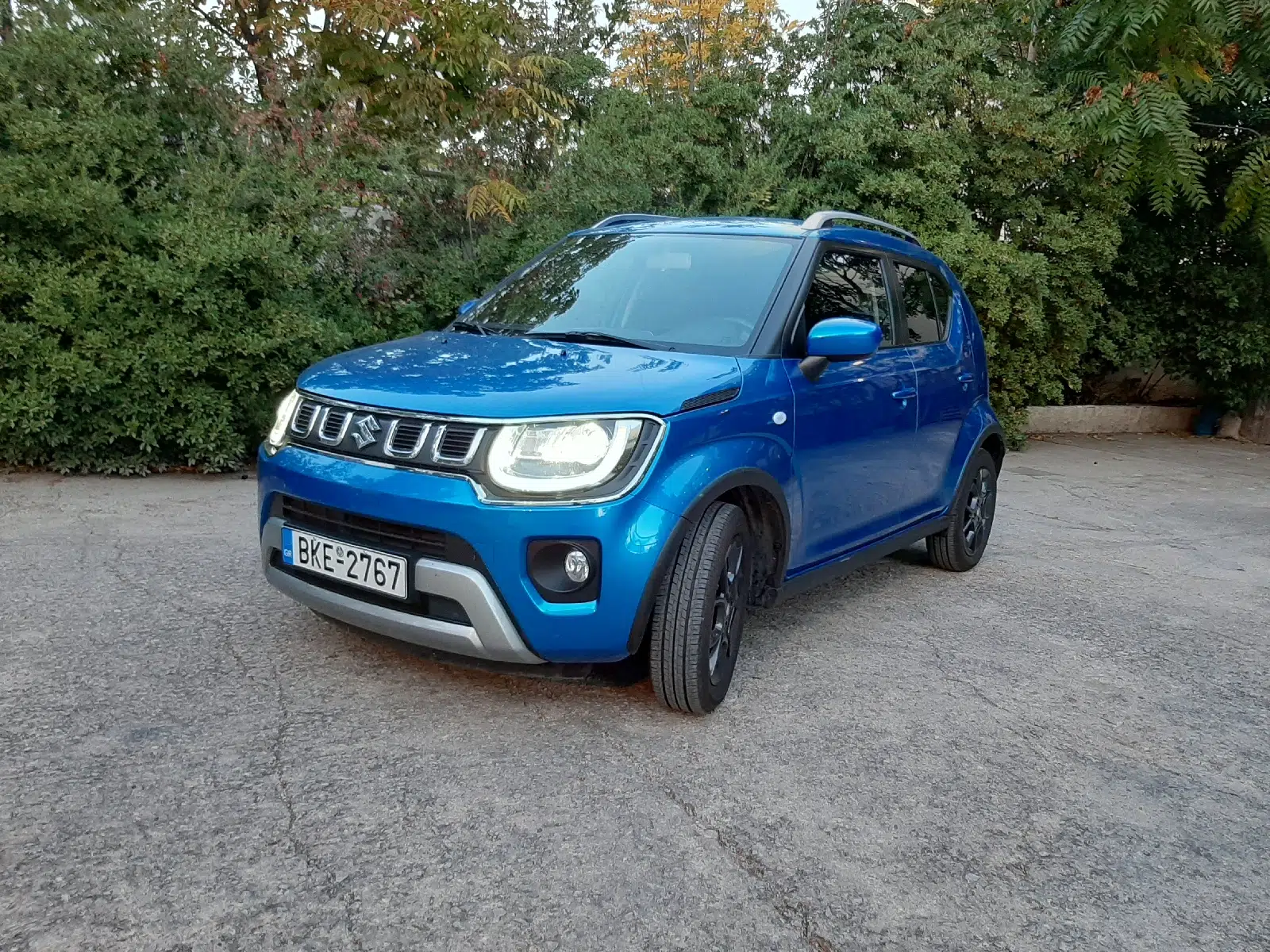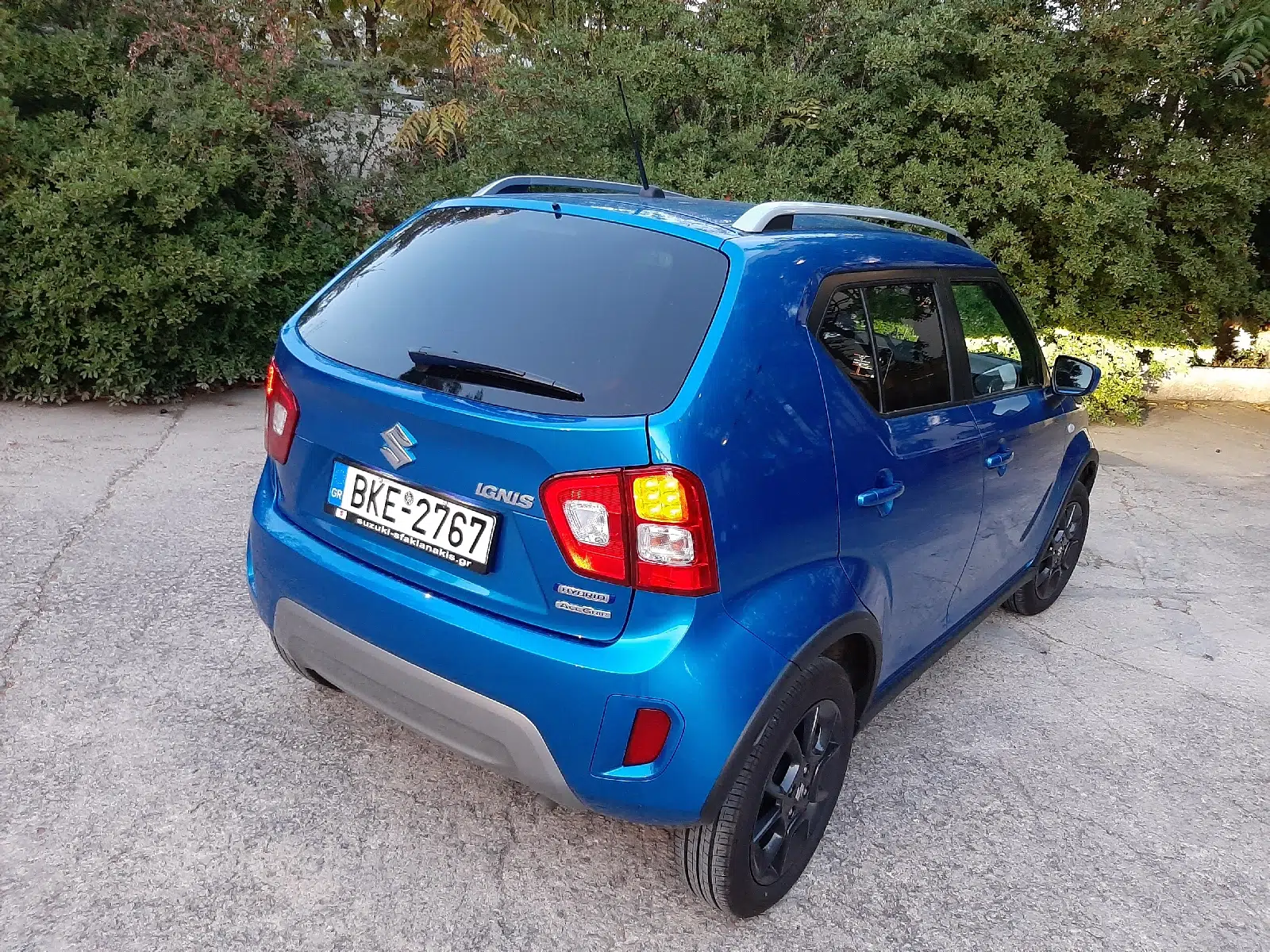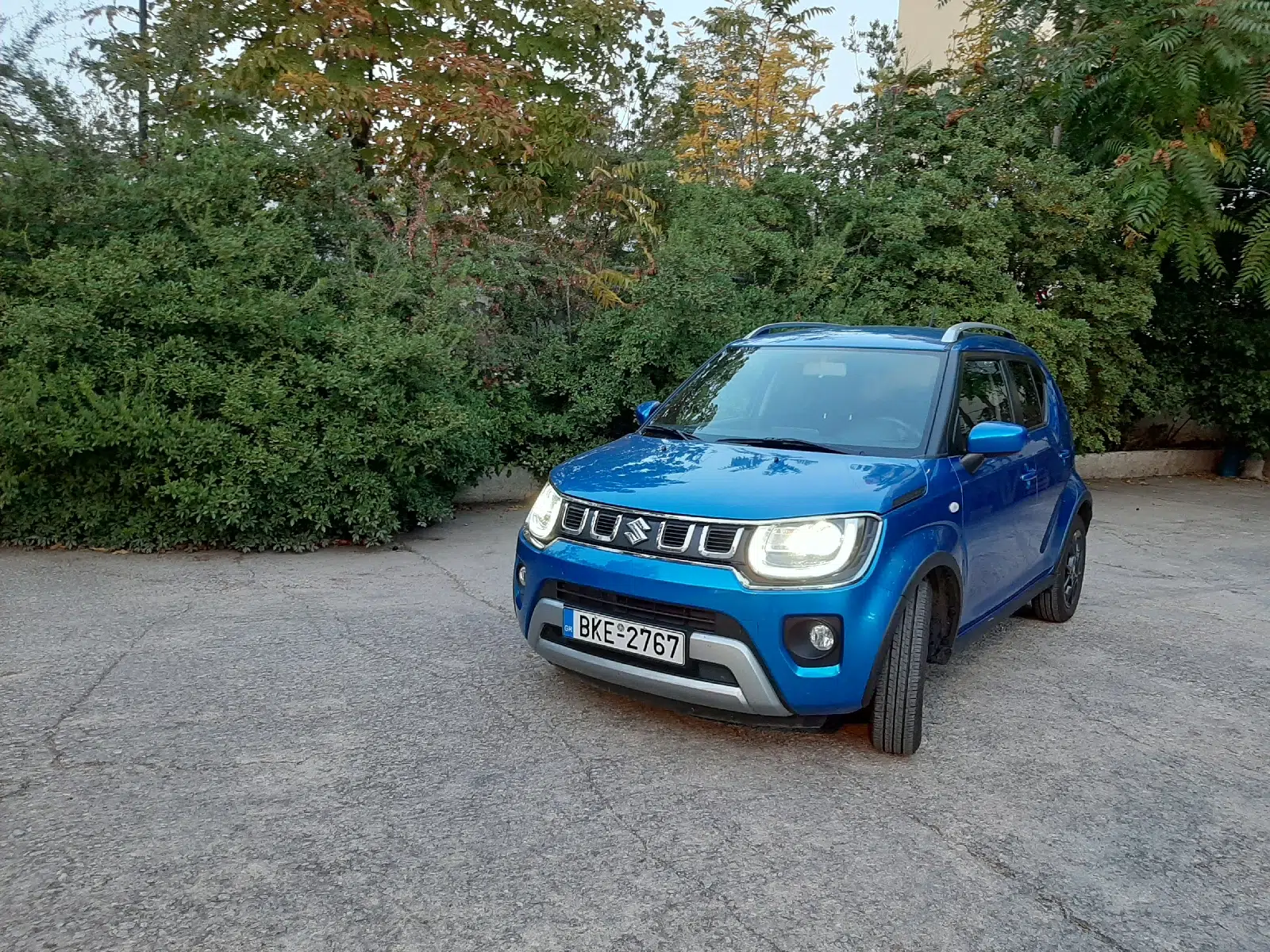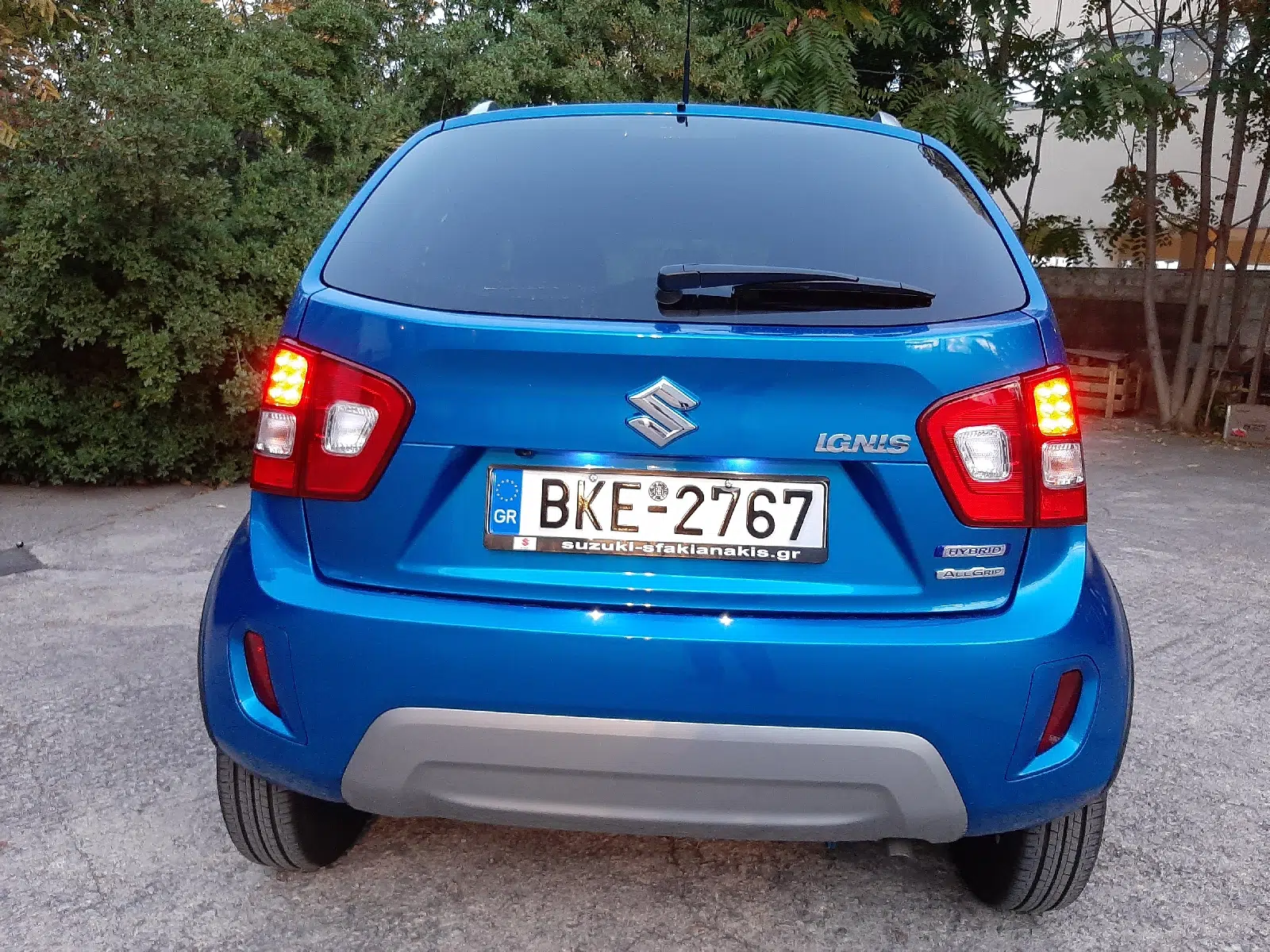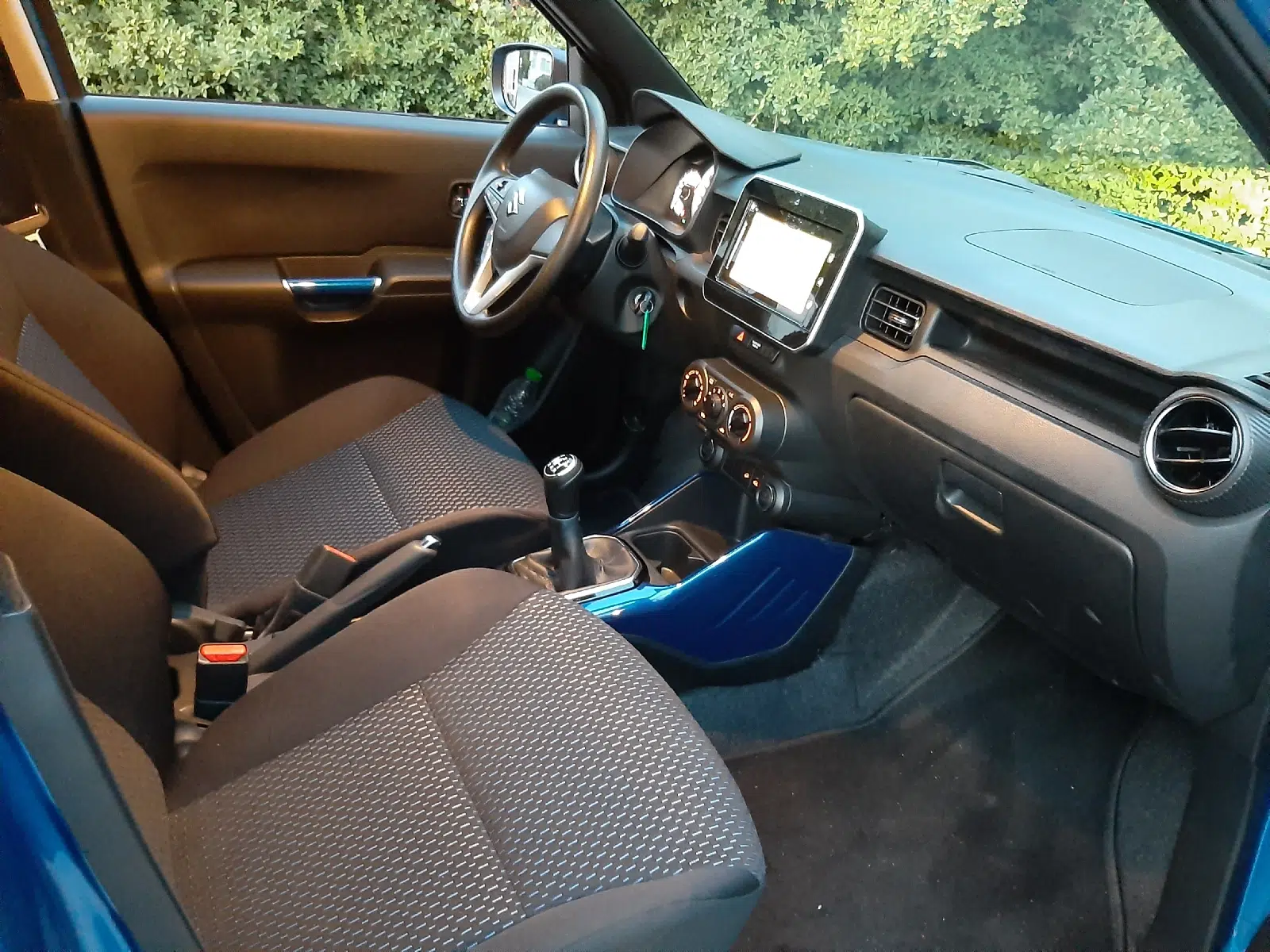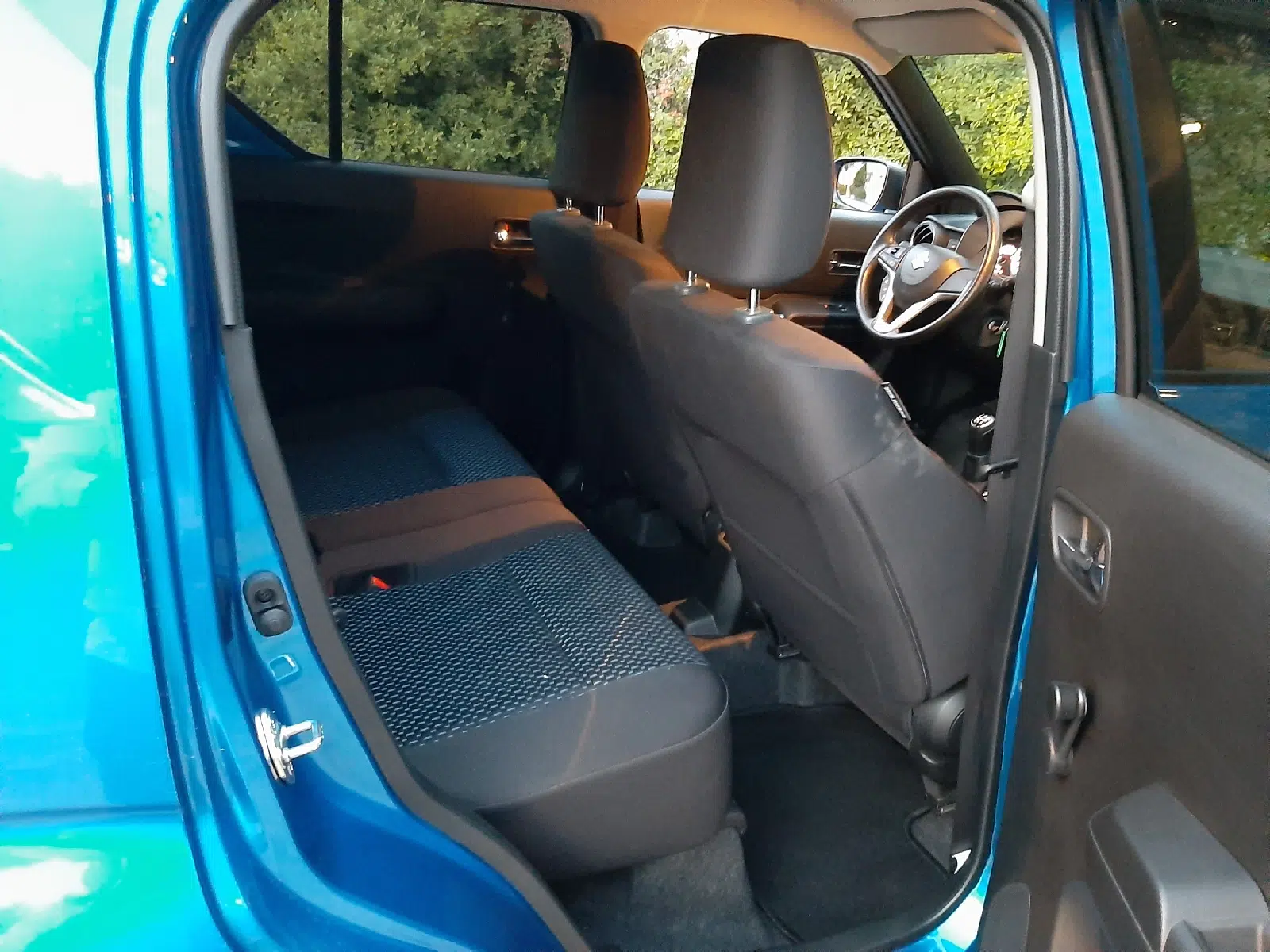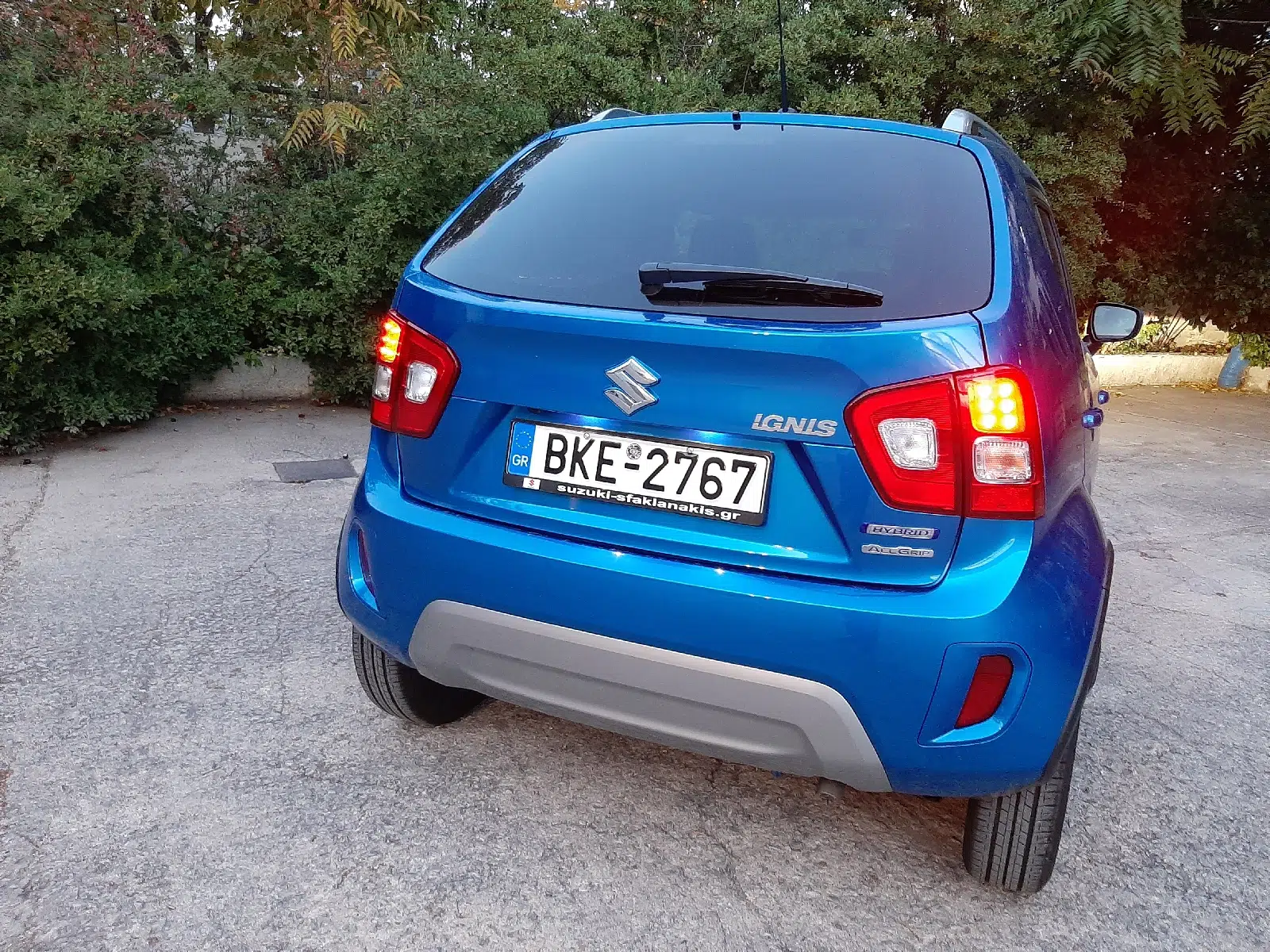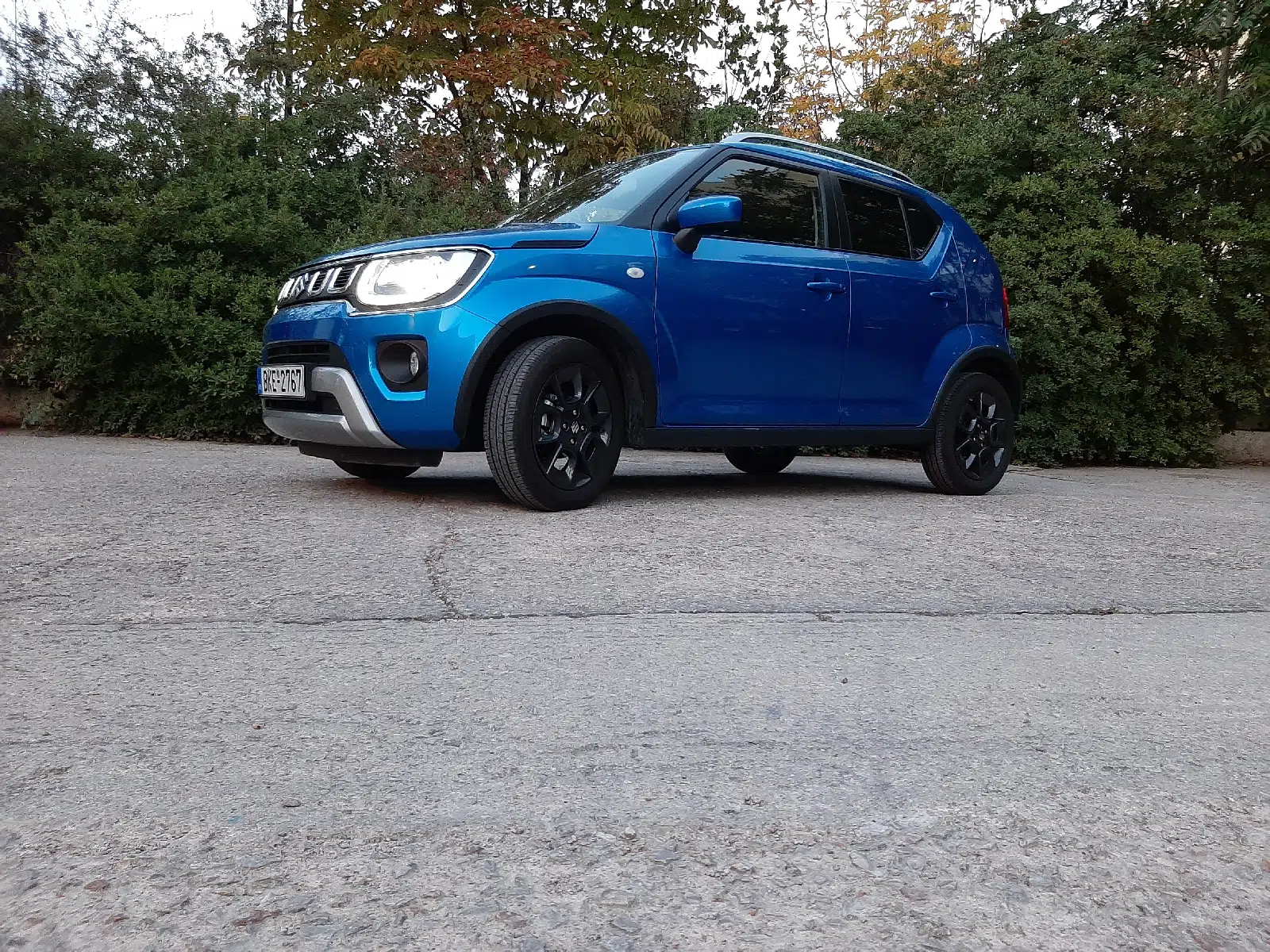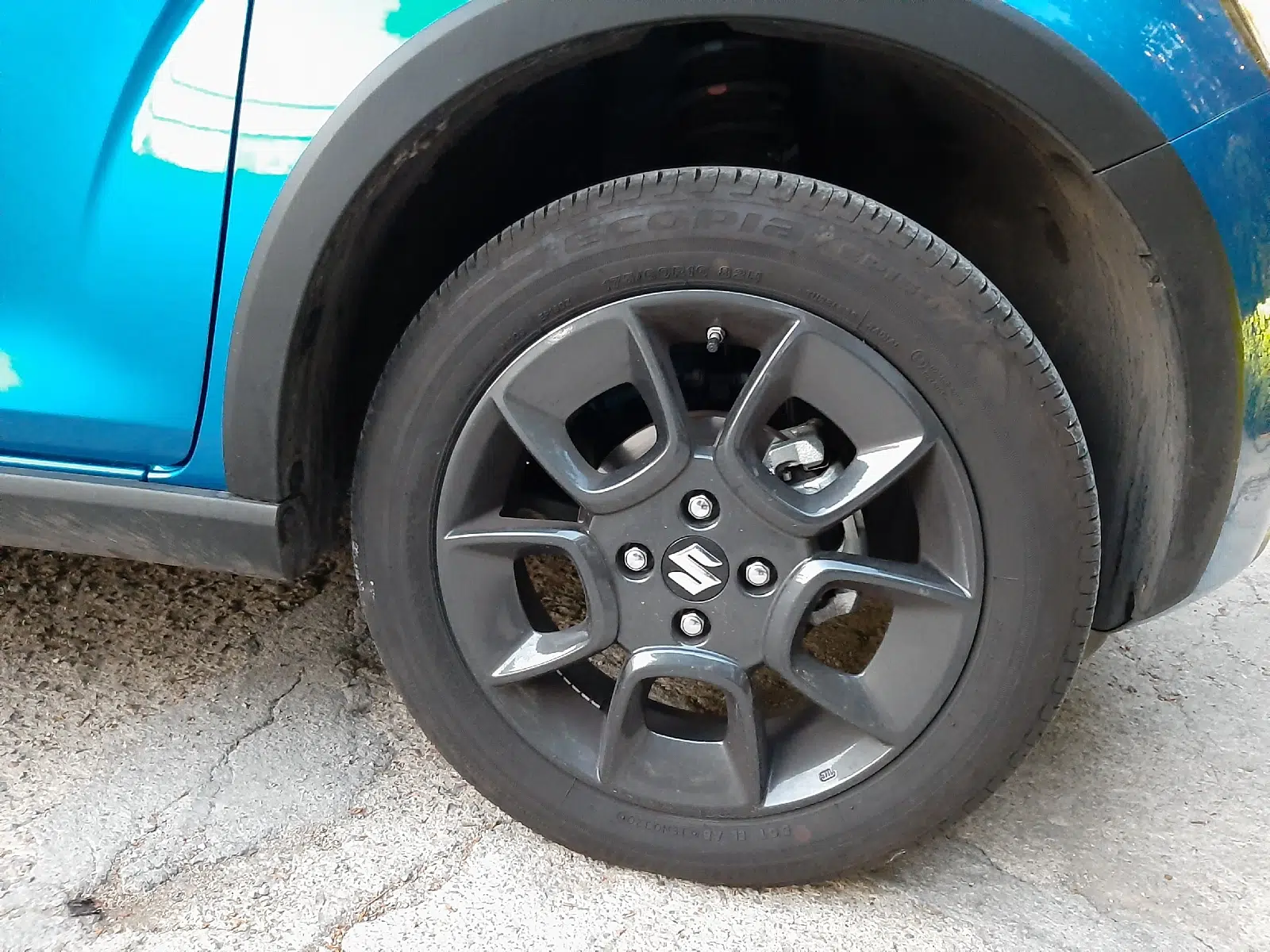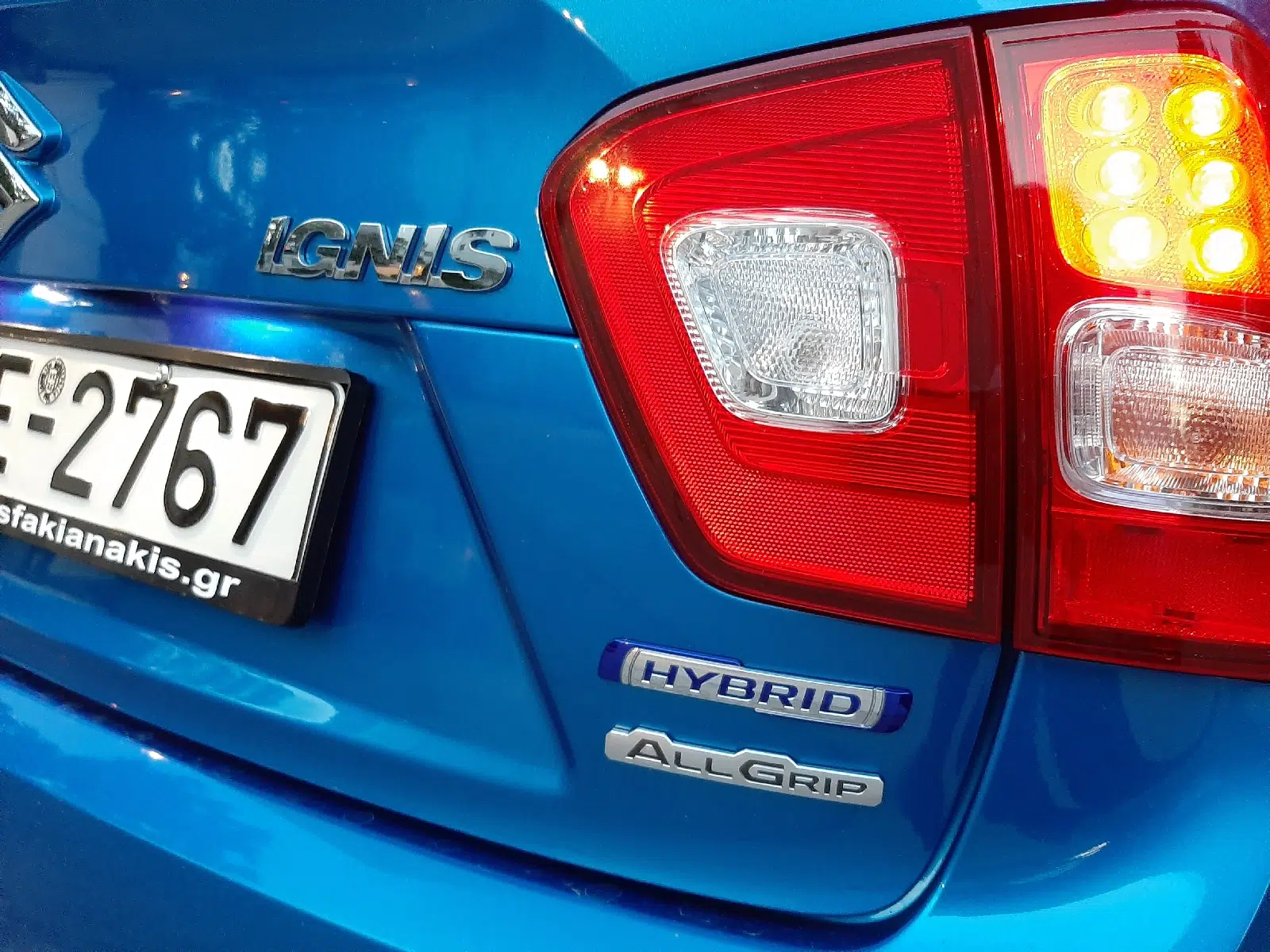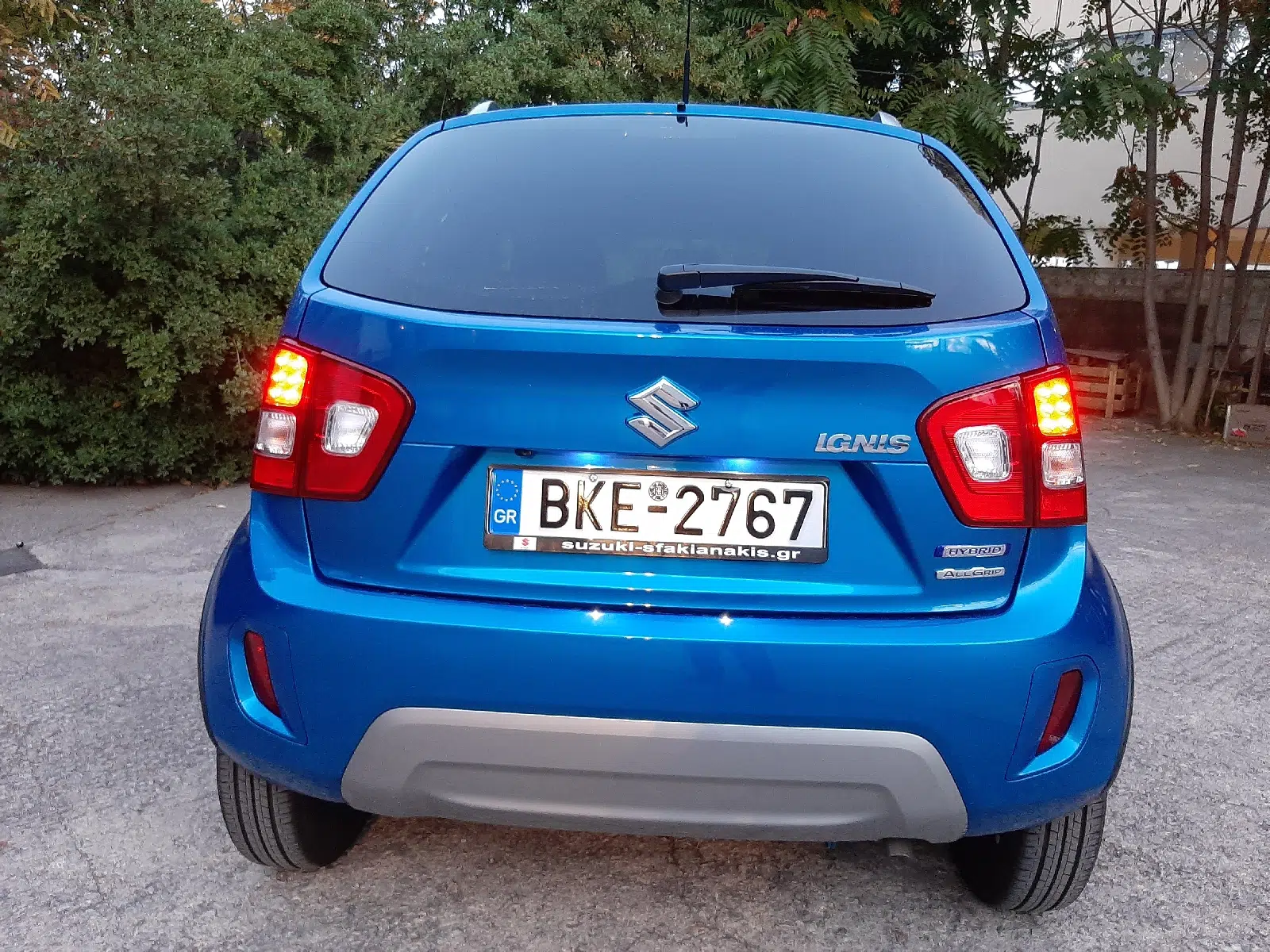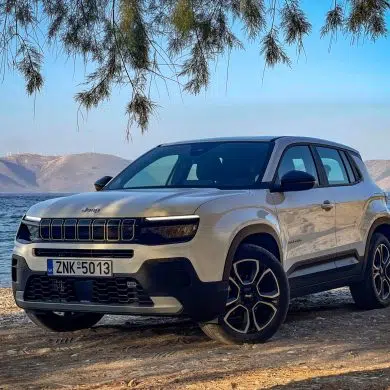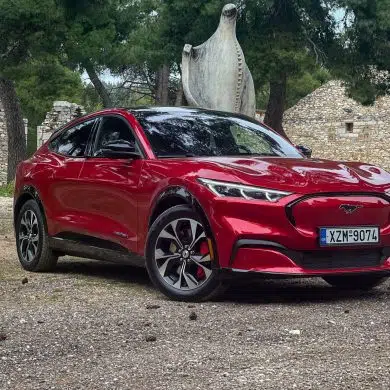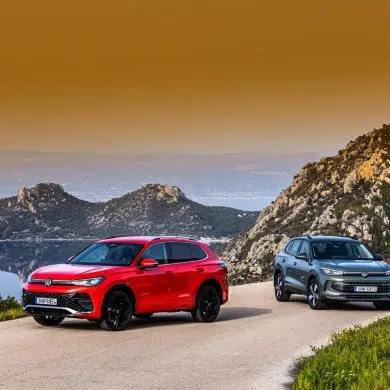Sometimes, the most nice things in life, are the simply. This philosophy is also embraced by the Suzuki Ignis, which retains the recipe of Kei cars of 70s, but enriching it with hybrid Technology, financial and efficient engine, increased height from the ground, but also 4-wheel drive. What more can you ask for in an everyday car?
The Japanese they know they've hit exactly what the average person needs for their daily commute (as evidenced by the global sales of the Ignis) and refreshed the model only on the points: They redesigned the bumpers, making the bumpers more pronounced protective aprons, they made the mask look more like "baby Vitara" and added three extra colors to the buyer's choice (Tough Khaki, Caravan Ivori, Rush Yellow). Otherwise, the Ignis is the same as we have come to know it, with the distinctive feature of the three "notches" on the wide rear pillar, which refer to the air ducts of the rear engineer (and rear-wheel drive) Suzuki Cervo and make it clear that it is a worthy successor of the brand's Kei cars.
At Inside, few things have changed: The upholstery on the seats, the trim on the dashboard and floor console, the better fit of the -always hard- plastics, the redesigned -with white lighting- instrument panel, which is now more practical and modern. Also the touch screen - with orange - black background- is now much easier to use, as it responds instantly with a touch and has no difficult menu. This dichroism in lighting and the asymmetry in the design of the dashboard, may seem strange to some people, but in any case it does not disturb the eye and is Pleasant in everyday life. Otherwise, it remains the same practicality, ergonomics, spaciousness that... we loved in the Ignis, with one more "tick" in the Quality of the cabin, in total.
The Ignis has sites... plenty of them to travel 4 people, in all circumstances and five, irrespective of age and Altitude, as its raised roof gives space for the heads of the Antetokounmpo, as plenty of space there is also for the feet. On the plus side, the sliding rear seat, while the luggage compartment for the four-wheel drive model we're testing, it goes all the way up to 227 litres. Important to note that the battery of the hybrid system has been installed under the seat of the driver, without causing space problems and spatial changes or affecting the comfort of any of the passengers.
But enough of that. Let's get to the important stuff. mild hybrid system with 12 volt circuit and a lithium-ion battery 10 Ah (until recently there were 3) working with the fresh 1.2 litre DualJet four-cylinder petrol engine, which attributes 83 horsepower and 107 Nm torque. The ISG, the alternator, works as follows: When you hit the brakes, recovers energy which it stores in the battery, as it does when rolling with a ratio in the box. In the latter case, you can feel a slight "cut" in the roll, certainly not as much as in the electric models, but not imperceptible.
On Energy that the ISG recovers uses it, operating as an electric motor and helping the gasoline engineer to moderate load, with additional 50 Nm of torque in the range from the 1,600 to 4,000 rpm In the acceleration sector, the existence of the hybrid system is not noticeable (logical, since it delivers 3.1 HP) and the only thing you really understand him in is the consumption fuel, in which you really need to do huge effort to transform the Ignis from very economical to "just" economic. The alternator uses the stored energy for both the start/stop, το οποίο εκκινεί γρήγορα και σχεδόν αθόρυβα, ενώ σου “χαρίζει” και κάποια μέτρα κίνησης με σβηστό το μοτέρ, πριν ακινητοποιηθείς.
Και μιας και μιλάμε για επιδόσεις: Η Suzuki δίνει 12,8 δευτερόλεπτα for the σπριντ στα 100 χ.α.ω. από στάση, with the Final ταχύτητα να φτάνει στα 165 χ.α.ω. Η κατανάλωσή του είναι 5,2 λίτρα/100 χιλιόμετρα και οι εκπομπές ρύπων 95 g/km CO2, νούμερα εντυπωσιακά για ένα AWD μοντέλο by 5άρι χειροκίνητο box.
On the road
The μεγάλο ατού του Ignis της δοκιμής μας είναι ο πολύπλευρος χαρακτήρας του. Πραγματικά, βλέποντάς την ψιλόλιγνη σιλουέτα του και τα πολύ λεπτά (175/60/16) ελαστικά του στις καλαίσθητες ανθρακί ζάντες, αναρωτιέσαι πώς θα συμπεριφέρεται σε διάφορες συνθήκες. Με δεδομένο ότι οι compact dimensions του (3.700 x 1.690 x 1.605 mm) ευνοούν την κίνηση στην πόλη, η torque που έρχεται από χαμηλά (αποδίδεται στις 2.800 σ.α.λ.) σε συνδυασμό με το σαφές στο κούμπωμά του και με σωστή κλιμάκωση 5άρι κιβώτιο, η κίνηση είναι παιχνιδάκι στα στενά της πόλης. Η κατανάλωση καυσίμου παραμένει σε… αστεία επίπεδα μιας και κάναμε μεγάλη προσπάθεια με το βαρύ δεξί πόδι του (υπο)γράφοντος να ξεφύγουμε από τα 5.4 lt/100 km. Εύφημη μνεία αξίζει το Ignis όχι μόνο για την κατανάλωσή του, αλλά και την flexibility του και την ευκολία στο παρκάρισμα που γίνεται παιχνιδάκι με την κάμερα οπισθοπορείας.
Όμως, αν πάρεις το AWD Ignis, δεν έχεις λόγο να μην ψάξεις μια “περιπετειούλα”. (Και) εδώ, το Ignis νοιώθει στο στοιχείο του, εκμεταλλευόμενο την απόσταση των 18 cm από το έδαφος, the Weight των μόλις 910 κιλών και όχι μόνο. Διαθέτει αυτόματη τετρακίνηση AllGrip, Hill Descent Control, Grip Control για χιόνι ή λάσπη, γωνίες προσέγγισης/ράμπας/διαφυγής 19,8/19,9/39,9 μοιρών αντίστοιχα, κοντούς προβόλους, ψηλή θέση οδήγησης και μεγάλες γυάλινες επιφάνειες, συνδυασμός που του χαρίζει ικανότητες… αγριοκάτσικου. Μοναδική “παραφωνία” για εκτός δρόμου εξόρμηση, είναι η έλλειψη ρεζέρβας (η οποία απουσιάζει ακόμα και από αμιγώς εκτός δρόμου πια).
Καλά όλα τα παραπάνω και το Ignis τα καταφέρνει μια χαρά. Όμως, τι γίνεται αν θες να πας Trip; Σε μακρά διαδρομή, στην εθνική, το Ignis δεν είναι κουραστικό όπως θα περίμενε κανείς. Τουναντίον. Ταξιδεύει άνετα, χωρίς τάσεις πλεύσης και χωρίς να επηρεάζεται από πλευρικούς ανέμους, αλλά και χωρίς να προβληματίσει σε κάποιο επίπεδο, μιας και δεν “δείχνει” το μεγάλο ύψος του, ενώ δεν περνούν ενοχλητικοί αεροδυναμικοί ήχοι στην καμπίνα. Σε ελαφρώς ανηφορικά κομμάτια, δεν μπορεί να διατηρήσει ταχύτητες άνω των 140 χ.α.ω. ενώ σε ελαφρώς κατηφορικά κομμάτια το κοντέρ μπορεί να δείξει ως και 190 χ.α.ω. και υπό όλες τις συνθήκες, είναι σταθερό όσο δεν το περίμενα and comfortable. Με δεδομένο ότι το όριο ταχύτητας στις ελληνικές εθνικές οδούς είναι τα 130 χ.α.ω., θα ταξιδέψεις μια χαρά μαζί του, ανησυχώντας (;) μόνο για τα διόδια. Αξίζει και εδώ να σημειώσω ότι με πατημένο τέρμα το γκάζι και σε ανηφορικό δρόμο, το Ignis έδειχνε μια άρνηση να καταναλώσει περισσότερα από 5,5 lt/100km.
Αυτό που είναι άξιο μνείας, είναι η δουλειά που έκαναν οι μηχανικοί της Suzuki at αναβάθμιση της ανάρτησης του Ignis. Υποθέτω ότι στα τετρακίνητα μοντέλα επέλεξαν να διατηρήσουν τον πίσω άκαμπτο άξονα (άξονας τριών συνδέσμων) για να του δώσουν πλεονέκτημα σε σκληρά τεραίν, με μια απλή και ανθεκτική λύση, αλλά και να διατηρήσουν χαμηλά το κόστος. Στην πράξη, δεν παρατήρησα ξερές αντιδράσεις ούτε στους… καρόδρομους και η συμπεριφορά του στο δρόμο δεν δείχνει ούτε το ύψος του. Το μόνο “παράπονό” μου είναι ότι θα ήθελα λίγο καλύτερο σε αίσθηση το ελαφρύ του τιμόνι.
In conclusion, the Ignis hybrid allgrip, με τιμή από 14.780 ευρώ (13.030 τα δικίνητα και στα 15.900 η έκδοση GL+ της δοκιμής μας) είναι ο ορισμός του τίμιου αυτοκινήτου. Έχει τη “συνταγή” του “δε σπάει δε χαλάει”, είναι ευέλικτο και οικονομικό για την καθημερινή κίνηση στην πόλη, έχει καλό εξοπλισμό άνεσης και ασφάλειας και προσφέρεται για αποδράσεις και σκαρφαλώματα σε απόκρημνα βουνά. Στο τέλος της ημέρας, το καλύτερο είναι ότι πρόκειται για ένα αυτοκίνητο που… έχει πλάκα χωρίς να πρέπει να βάλεις βαθιά το χέρι στην τσέπη…


